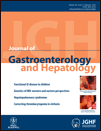Role of 18F-fluorodeoxyglucose positron emission tomography/computed tomography in the characterization of pancreatic masses: Experience from tropics
Abstract
Background and Aim
Early detection and differentiation of malignant from benign pancreatic tumors is very essential as mass-forming pancreatitis is a frequently encountered problem. Positron emission tomography (PET) has a role in establishing the diagnosis of pancreatic carcinoma when the conventional imaging modalities or biopsies are nondiagnostic. In this prospective study, the utility of fluorodeoxyglucose (FDG)-PET/computed tomography (CT) in the characterization of mass-forming lesions of the pancreas was reported.
Methods
18F-FDG-PET/CT was prospectively performed in 87 patients diagnosed to have periampullary or pancreatic mass. Lesions with focally increased FDG uptake in PET/CT were considered malignant, whereas those with diffuse or no FDG uptake were considered benign. Semiquantitative analysis with maximum standardized uptake value (SUVmax) was also calculated. The PET/CT results were compared with histopathological results in all patients.
Results
Based on the FDG uptake pattern, sensitivity, specificity, positive predictive value, negative predictive value, and accuracy for FDG-PET/CT in characterizing the periampullary and pancreatic masses into benign and malignant lesions were 93%, 90%, 95%, 87%, and 92% respectively. Receiver operating characteristics curve analysis of the SUVmax of the lesions yielded a cut-off value of 2.8, with a sensitivity and specificity of 87.5% and 45% respectively.
Conclusion
The FDG uptake pattern in PET/CT can differentiate malignant from benign mass-forming lesions of the pancreas with high accuracy and a discrete cut-off value of SUVmax could not be defined for the same as even lesions with pancreatic tuberculosis showed very high FDG uptake. Hence, in patients with a suspicion of malignancy in the pancreas, a focally increase FDG uptake in PET/CT suggests the diagnosis of malignancy.




